
Genista stenopetala, the sweet broom, Easter broom or leafy broom, is a species of flowering plant in the legume family Fabaceae, native to the Canary Islands, on La Palma and Tenerife.

The green hairstreak is a small butterfly in the family Lycaenidae.
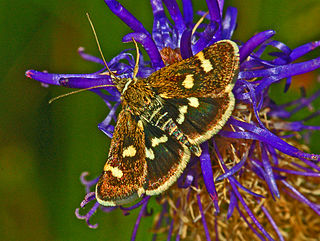
Eurrhypis pollinalis is a species of moth of the family Crambidae. It was described by Michael Denis and Ignaz Schiffermüller in 1775.

Uresiphita gilvata is a moth of the family Crambidae. It was first described by Johan Christian Fabricius in 1794 and is found in Europe and North Africa.

Rhodostrophia calabra is a moth of the family Geometridae first described by Vincenzo Petagna in 1786. It is found from the Iberian Peninsula and a small isolated population in Morocco, through southern France, the western and southern Alps, Italy, the eastern coast of the Adriatic Sea to the southern parts of the Balkan Peninsula. In central Europe it is only found as an isolated population in central France and Rheinland-Pfalz. It is not found on the islands in the Mediterranean Sea. In the Balkans there is an isolated population in the border region of northern Bulgaria and Serbia. Furthermore, it is present on the eastern shores of the Black Sea in Turkey and in the Caucasus.
Cydia medicaginis, the alfalfa moth, is a moth of the family Tortricidae. It is found in northern and central Europe, Transcaucasus, Kazakhstan and from western Russia to southern Siberia.
Phyllonorycter triflorella is a moth of the family Gracillariidae. It is known from France, Corsica, Sardinia, Italy and Croatia.

Phyllonorycter staintoniella is a moth of the family Gracillariidae. It is found from Sweden to the Pyrenees, Sardinia, Italy and Bulgaria and from Great Britain to Poland and Romania.

Isturgia famula is a moth of the family Geometridae. It is known from southern Europe.
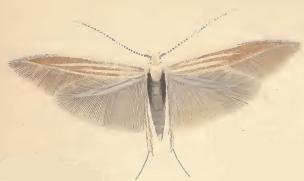
Coleophora trifariella is a moth of the family Coleophoridae. It is found from Germany and Poland to the Iberian Peninsula and Italy and from France to Romania. There is a disjunct population in Belarus. It is also known from Turkey.

Agonopterix atomella is a moth of the family Depressariidae. It is found in most of Europe.
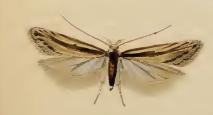
Mirificarma mulinella is a moth of the family Gelechiidae. It is found in most of Europe, except Finland, the Baltic region and part of the Balkan Peninsula. It has also been recorded from North Africa.
Mirificarma interrupta is a moth of the family Gelechiidae. It is found in Portugal, Spain, France, the Benelux, central Europe, Romania and North Africa.
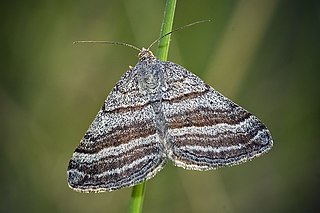
Scotopteryx coarctaria is a species of moth in the family Geometridae. It is found in most of Europe, except Ireland, Great Britain, Portugal, Belgium, Fennoscandia and the Baltic region. It has also been recorded from Turkey and Kazakhstan. There are probably two generations per year.

Scotopteryx peribolata, the Spanish carpet, is a species of moth in the family Geometridae. It is found in Spain, Portugal, France, Switzerland and Great Britain, where it is found on the Channel Islands and on occasion along the southern coast of mainland Britain.
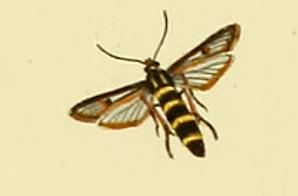
Bembecia megillaeformis is a moth of the family Sesiidae. It is found in central and south-eastern Europe, east to Turkey, Uralsk, the Crimea and the Black Sea.
Prolita solutella is a moth of the family Gelechiidae. It is widely distributed throughout Europe, east to the Ural mountains. It is also found in Turkey. The habitat consists of dry pastures and dry heathland.

Uresiphita reversalis, the genista broom moth or sophora worm, is a moth in the family Crambidae. It was described by Achille Guenée in 1854. U. reversalis was probably native to Mexico before spreading north and becoming established in Los Angeles by 1930 and the San Francisco Bay Area by 1980. It has since been recorded across the United States and in Cuba, Bermuda, Puerto Rico and Jamaica. Both adults and caterpillars are aposematic.
Syncopacma cincticulella is a moth of the family Gelechiidae. It was described by Charles Théophile Bruand d'Uzelle in 1851. It is found in Asia Minor and southern and south-eastern Europe, where it has been recorded from Spain, France, Germany, Austria, Switzerland, Italy, the Czech Republic, Slovakia, Hungary, Romania, Poland, Ukraine and Russia.

Genisteae is a tribe of trees, shrubs and herbaceous plants in the subfamily Faboideae of the family Fabaceae. It includes a number of well-known plants including broom, lupine (lupin), gorse and laburnum.












